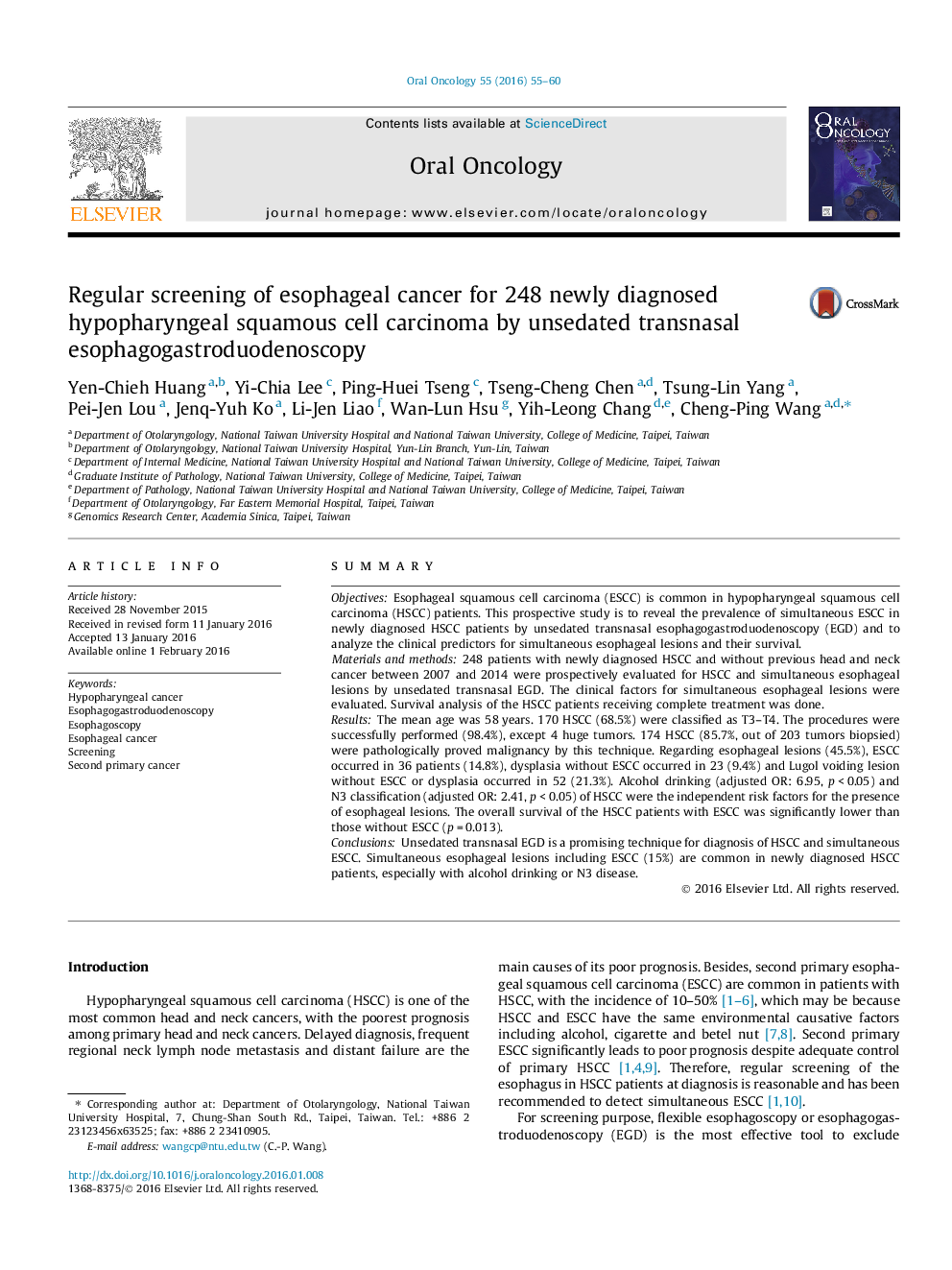| کد مقاله | کد نشریه | سال انتشار | مقاله انگلیسی | نسخه تمام متن |
|---|---|---|---|---|
| 3163907 | 1586255 | 2016 | 6 صفحه PDF | دانلود رایگان |

• Simultaneous ESCC is common (15%) in newly diagnosed HSCC patients.
• Alcohol and N3 disease of HSCC are the risk factors for esophageal lesions.
• The overall survival of HSCC patients with ESCC was worse than those without ESCC.
SummaryObjectivesEsophageal squamous cell carcinoma (ESCC) is common in hypopharyngeal squamous cell carcinoma (HSCC) patients. This prospective study is to reveal the prevalence of simultaneous ESCC in newly diagnosed HSCC patients by unsedated transnasal esophagogastroduodenoscopy (EGD) and to analyze the clinical predictors for simultaneous esophageal lesions and their survival.Materials and methods248 patients with newly diagnosed HSCC and without previous head and neck cancer between 2007 and 2014 were prospectively evaluated for HSCC and simultaneous esophageal lesions by unsedated transnasal EGD. The clinical factors for simultaneous esophageal lesions were evaluated. Survival analysis of the HSCC patients receiving complete treatment was done.ResultsThe mean age was 58 years. 170 HSCC (68.5%) were classified as T3–T4. The procedures were successfully performed (98.4%), except 4 huge tumors. 174 HSCC (85.7%, out of 203 tumors biopsied) were pathologically proved malignancy by this technique. Regarding esophageal lesions (45.5%), ESCC occurred in 36 patients (14.8%), dysplasia without ESCC occurred in 23 (9.4%) and Lugol voiding lesion without ESCC or dysplasia occurred in 52 (21.3%). Alcohol drinking (adjusted OR: 6.95, p < 0.05) and N3 classification (adjusted OR: 2.41, p < 0.05) of HSCC were the independent risk factors for the presence of esophageal lesions. The overall survival of the HSCC patients with ESCC was significantly lower than those without ESCC (p = 0.013).ConclusionsUnsedated transnasal EGD is a promising technique for diagnosis of HSCC and simultaneous ESCC. Simultaneous esophageal lesions including ESCC (15%) are common in newly diagnosed HSCC patients, especially with alcohol drinking or N3 disease.
Journal: Oral Oncology - Volume 55, April 2016, Pages 55–60